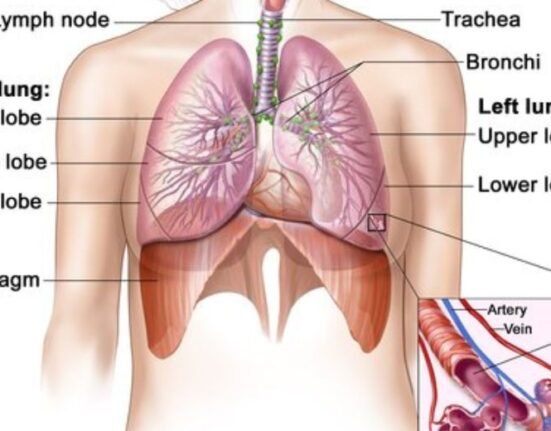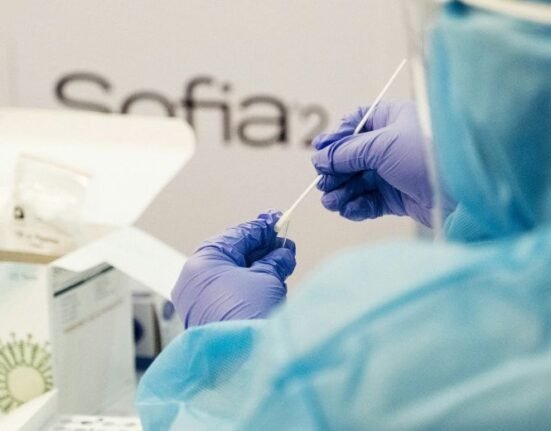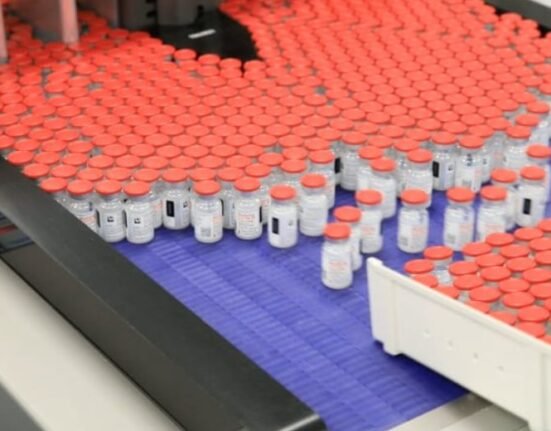HQ Team
July 11, 2023: Scientists at Washington University in St. Louis are looking to commercialize their biosensor technology for sniffing out Covid-19 virus variants out of thin air in a room within five minutes.
In real-time, the monitors, by using aerosol technologies and ultra-sensitive biosensing techniques, can detect any of the SARS-CoV-2 virus variants in a room, according to a study published in Nature Communications.
The unavailability of quick and affordable community-level infection detection protocols has been a limiting factor for policymakers in implementing prompt COVID-19 transmission mitigation strategies.
A real-time noninvasive surveillance device that can detect SARS-CoV-2 aerosols directly in the air is a potential solution for infection management strategies and the resumption of normal activities, the researchers wrote.
The device is compact and is about one foot wide and 10 inches tall. It lights up when a virus is detected, alerting administrators to increase airflow or circulation in the room.
Currently, offline air sampling techniques are commonly used for virus aerosol detection, where the sample collection and analysis are done in two stages. First, the virus aerosols are collected using standalone bioaerosol samplers, after which the samples are transported to a lab for further analysis.
Air sampling techniques
Recent studies used offline air sampling techniques such as condensation growth-based particle into liquid samplers (PILS), wet-wall cyclone-based PILS, and filter sampling, followed by virus detection using reverse transcription-quantitative polymerase chain reaction (RT-qPCR).
These detect the presence of SARS-CoV-2 RNA in the air inside hospitals, shopping centers, public transport, residential rooms, and even outdoor air.
While these methods underscored the importance of a surveillance method for detecting airborne viruses to control the spread of the infection, they have long turnaround times — of between one hour and a day — require skilled labor, and do not provide real-time information, which is needed to take swift control measures to manage the airborne spread of the virus.
There are no commercially available automated real-time airborne SARS-CoV-2 detection devices, the researchers wrote.
“This is mainly because of two technology gaps: first is the requirement of an efficient, high-flow virus aerosol sampler that can be integrated into a real-time virus detector. Second is the need for a virus detection protocol that is fast, accurate, and sensitive enough to measure the low concentration of viruses typically found in ambient air.”
Pathogen Air Quality monitor
The team’s pathogen Air Quality (pAQ) monitor solved that puzzle with their biosensor for near-real-time detection of SARS-CoV-2 in the air with a five-minute time resolution.
The technology was earlier adapted from an electrochemical biosensor used to detect amyloid-β in the setting of Alzheimer’s disease. Virus-laden aerosols are directly sampled from the air onto a liquid collection medium in the wet cyclone and transferred to a biosensor unit, which detects and reports the presence of virus within thirty seconds.
The pAQ monitor performance and sensitivity were validated in the lab using multiple inactivated SARS-CoV-2 virus variants, according to the researchers.
“There is nothing at the moment that tells us how safe a room is,” John Cirrito, a professor of neurology at the School of Medicine said.
“If you are in a room with 100 people, you don’t want to find out five days later whether you could be sick or not. The idea with this device is that you can know essentially in real-time, or every 5 minutes if there is a live virus.”
To convert the biosensor from detecting amyloid beta to a coronavirus, the researchers exchanged the antibody that recognizes amyloid beta for a nanobody from llamas that recognizes the spike protein from the SARS-CoV-2 virus.
Inexpensive
The nanobody is small, easy to reproduce and modify, and inexpensive to make, the researchers said.
“The nanobody-based electrochemical approach is faster at detecting the virus because it doesn’t need a reagent or a lot of processing steps,” Carla Yuede, an associate professor of psychiatry at the School of Medicine said.
“SARS-CoV-2 binds to the nanobodies on the surface, and we can induce oxidation of tyrosines on the surface of the virus using a technique called square wave voltammetry to get a measurement of the amount of virus in the sample.”
The wet cyclone sampler has an automated pump that collects the fluid and sends it to the biosensor for seamless detection of the virus using electrochemistry.
“The challenge with airborne aerosol detectors is that the level of virus in the indoor air is so diluted that it even pushes toward the limit of detection of polymerase chain reaction (PCR) and is like finding a needle in a haystack,” said Rajan Chakrabarty, Harold D. Jolley Career Development Associate Professor of energy, environmental & chemical engineering at McKelvey Engineering.
Room-sized chamber
“The high virus recovery by the wet cyclone can be attributed to its extremely high flow rate, which allows it to sample a larger volume of air over a five-minute sample collection compared with commercially available samplers.”
In laboratory experiments that aerosolized SARS-CoV-2 into a room-sized chamber, the wet cyclone and biosensor were able to detect varying levels of airborne virus concentrations after only a few minutes of sampling.
“We are starting with SARS-CoV-2, but there are plans to also measure influenza, RSV, rhinovirus and other top pathogens that routinely infect people,” Prof Cirrito said.
“In a hospital setting, the monitor could be used to measure for staph or strep, which cause all kinds of complications for patients. This could really have a major impact on people’s health.”








